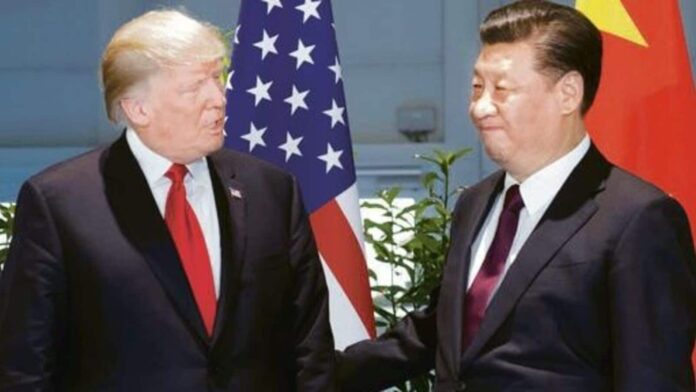Among the many elements that will influence events, four global factors are critical because their impact will be felt on global interest rates, commodity prices, currency values and equity indices; these ripples promise to travel far and wide, including to India. Two of these elements involve strongmen engaged in a game of one-upmanship.
One thing is certain: the incoming government in the US is sure to keep risk managers, forecasting agencies, scenario planners and geopolitical analysts busy.
With Donald Trump promising to weaponize tariffs and clamp immigrant flows, while mocking climate change and taking an axe to the US’s multilateral commitments, large-scale unpredictability is likely to undergird the next 12 months.
This has the potential to upset growth and inflation projections, forcing Federal Reserve action that could shave values from global markets.
The trailer of another future volatile scenario was available recently when Republican members in the US Congress defied a Trump diktat to freeze a spending bill.
With Trump and these Republican lawmakers certain to butt heads on more issues in the coming months, analysts should be prepared for a greatly impetuous White House impacting governance and the economy.
The second variable with an oversized effect on the global economy is the behavioural response from another strongman half-way across the world from Washington DC.
The world will not only be watching how Chinese President Xi Jinping reacts to Trump’s sabre-rattling, but will also be tracking his policy response to China’s economic slowdown, which has so far refused to respond to all manner of stimuli.
The Chinese economy has been tormented by slow growth, rising unemployment, deflationary impulses and a menacing debt overhang.
The policy response has so far shied away from transferring resources to individual consumers, but statements from official sources indicate larger stimulus packages to come in 2025.
Consumption has traditionally contributed only 35-40% of China’s gross domestic product (GDP); the Chinese government, after resisting putting more money in individual pockets, seems to be finally adopting an expansionary and deficit-financed expenditure programme.
The need for an aggressive domestic consumption revival plan seems to have been necessitated by Trump’s threats of punitive tariffs on Chinese goods.
Data shows Chinese exports to the US contribute close to 3% of GDP, though the jury is out whether a stimulus programme can make up for the GDP loss if Trump follows through on his threats.
In fact, with tariff walls going up in the US, China may turbo-charge its hunt for alternate export markets, including India.
The Xi-Trump sparring contest may have multiple ripple effects on the Indian economy. One direct outcome of Trump imposing reciprocal tariffs against Indian exports will be a marginal erosion in GDP, since the US is among India’s top export markets.
But if Trump’s China tariff policy becomes a reality, the larger problem will emanate from rising US inflation and the Fed’s interest rate response, imperilling even India’s domestic economic equilibrium.
The third incalculable variable is the West Asian geopolitical flux and the Russia-Ukraine war. Israel’s sledgehammer military response to the October 2023 Hamas attack has not only razed Gaza, but also defanged Hezbollah and, by extension, weakened Iran.
The Iranian need to temporarily withdraw and regroup created a vacuum long enough for rebels to overthrow the Syrian regime and establish a new ruling class.
The Syrian episode threw up two other pointers: the emergence of Turkey as a regional power broker and Russia’s withdrawal from Syria to better marshal its Ukraine assault. It is still unclear where the chips will fall in the Middle East.
This geopolitical instability in the region throws cold water on India’s planned trade routes: the India-Middle East-Europe Economic Corridor and North-South Corridor passing through Iran, Central Asia and Russia to Europe.
In addition, Recep Erdogan’s frosty ties with India over Kashmir, in the midst of Istanbul’s tightening grip over Middle East politics, adds a new element of West Asian discomfort for New Delhi.
The fourth global source of uncertainty will be the direction artificial intelligence (AI) takes over the next few months, especially in workplaces and national security matrices.
The debate over AI regulation and guard-rails found expression for the first time in the Peru agreement between the US and China, which accords priority to human intervention in national nuclear command structures.
However, there is no clarity on how governments plan to use the new tool at home, especially for surveillance. The next challenge is to see how businesses embed AI and its impact on jobs, consumer rights or data privacy.
July’s Economic Survey had voiced concerns over AI’s harm to the economy, specifically jobs across the spectrum.
To be sure, Indian planners and analysts will have their hands full, trying to second-guess the nature of fluidity and crafting appropriate policy responses.
#Prospects #visible #endofyear #haze
